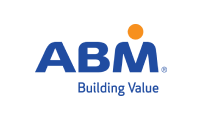Linking ESG metrics to executive compensation has become a hallmark of progressive corporate governance. For Canadian sustainability professionals, this trend offers both an opportunity and a challenge: understanding how ESG factors are influencing pay structures at the highest levels of leadership.
The Rise of ESG Metrics in Executive Compensation
Globally, more than 75% of S&P 500 companies now incorporate ESG metrics into their executive pay plans, according to a 2024 report by The Conference Board . The drivers of this shift include:
-
Investor Pressure: Major investors like BlackRock explicitly advocate for ESG-linked pay to align leadership incentives with long-term sustainability.
-
Regulatory Momentum: Jurisdictions such as the European Union’s Corporate Sustainability Reporting Directive (CSRD) and Canadian policies on green economy growth demand enhanced ESG accountability.
-
Stakeholder Expectations: Employees, consumers, and communities increasingly scrutinize corporate ethics and environmental responsibility.
In Canada, this evolution aligns with federal efforts to grow the green workforce and embed sustainability into economic planning.
How ESG Metrics Are Shaping Compensation Frameworks
Companies tailor ESG metrics based on sector-specific risks and opportunities:
| Sector | Common ESG Metrics in Compensation |
|---|---|
| Energy & Mining | Carbon emissions reduction, safety standards |
| Financial Services | Board diversity, ethical investment criteria |
| Manufacturing | Resource efficiency, supply chain transparency |
For example, Teck Resources, one of Canada’s largest mining firms, ties part of its executive pay to safety performance and climate targets, as noted in its 2023 Sustainability Report.
The Canadian Perspective: Regulatory and Market Drivers
Canadian companies face increasing pressure to disclose ESG risks and opportunities in alignment with the Canadian Securities Administrators (CSA) guidance on climate-related disclosures .
Furthermore, the Sustainable Finance Action Council (SFAC) is guiding the integration of sustainability into financial regulation, which indirectly impacts how firms structure executive rewards around ESG progress.
Why ESG Training is Vital for Professionals
For HR leaders, sustainability practitioners, and board members, understanding ESG metrics is no longer optional. Specialized training equips professionals to:
-
Identify material ESG issues relevant to their sector.
-
Design measurable and transparent metrics that align with regulatory standards like the CSRD or Canada’s CSA guidance.
-
Avoid greenwashing pitfalls by ensuring credible and auditable ESG targets.
The Certified Sustainability (ESG) Practitioner Program by CSE, with over 9,500 alumni globally, has been recommended by sustainability leaders for its practical approach. Alumni from firms like L’Oréal, NASA, and the Government of Canada have leveraged the training to integrate ESG factors into governance and compensation.
👉 Explore the Canada ESG Training Program (Cohort 2)
Expert Perspectives
In a recent McKinsey & Company report, experts highlighted that:
“ESG-linked incentives can be a catalyst for performance, but only when paired with clear, material metrics and transparent reporting frameworks.”
Similarly, the Globe and Mail reported that a growing number of Canadian firms, including banks, are integrating ESG into executive bonuses, driven by shareholder activism and global reporting standards (source).
Final Thoughts: Building Competence in ESG Metrics
The integration of ESG metrics in executive compensation is reshaping how leadership performance is evaluated. Professionals equipped with the right ESG knowledge and skills will not only advance their careers but also strengthen their organizations’ sustainability commitments.
If you’re looking to position yourself at the forefront of this transformation, ESG training tailored to corporate governance and strategy is indispensable.
👉 Register now for the Certified Sustainability ESG Practitioner Program in Canada (Cohort 2)







